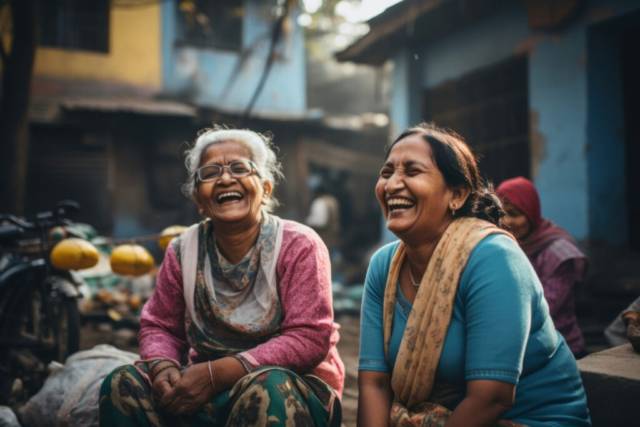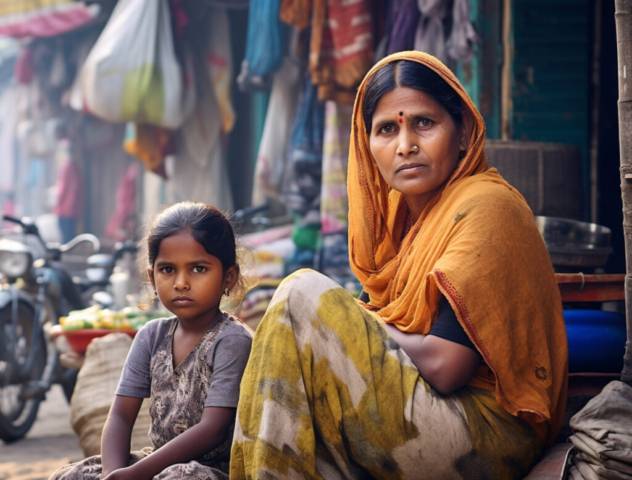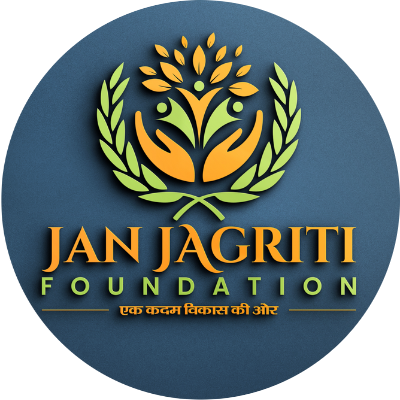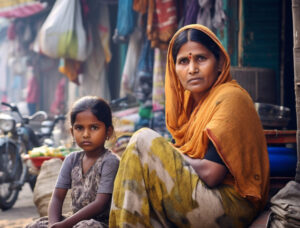



From youth and women empowerment to rural development, education, health, and the environment — every step we take is for a better tomorrow.

At Jan Jagriti Foundation, we believe awareness is the first step to change.
Join us in creating empowered communities through education, health, and sustainable development.

From training to entrepreneurship, we support women in becoming independent and respected voices in society.
Together, we build a stronger, more equal future.
Quick Links

About Jan Jagriti Foundation
Jan Jagriti Foundation is a dedicated non-profit organization committed to bringing real change at the grassroots level. Built on the belief that awareness is the first step toward transformation, our mission is to empower individuals, especially in underrepresented and underserved communities, to rise and realize their full potential.
From nurturing young minds to supporting women in becoming self-reliant, from revitalizing rural areas to addressing environmental concerns—Jan Jagriti Foundation stands for inclusive and sustainable development. Our work is not just about offering help; it’s about creating opportunities, building confidence, and igniting a collective spirit of growth.
Goals Of Jan Jagriti Foundation
Youth Empowerment
Women Empowerment
Rural Empowerment
Environmental Help
Education Empowerment
Health Empowerment
Tribes Empowerment
Tribe’s Education Empowerment
Rural Empowerment
Environmental Help
Education Empowerment
Health Empowerment
At Jan Jagriti Foundation, we believe that meaningful change begins with clear intentions and consistent action. Our goals reflect our commitment to building a more empowered, inclusive, and sustainable society.
✦ Empower Youth for a Better Tomorrow
To provide skill development, mentorship, and leadership opportunities that prepare young individuals to lead with confidence and purpose.
✦ Support and Uplift Women
To help women become financially independent, educated, and confident through training programs, awareness drives, and community support.
✦ Strengthen Rural Communities
To bridge the gap between urban and rural development by improving access to education, health, sanitation, and livelihood in remote villages.
✦ Promote Quality Education
To ensure that every child, regardless of background, receives the support and resources needed to continue their education without barriers.
✦ Improve Public Health Awareness
To organize regular health camps, hygiene workshops, and awareness programs for preventive care and healthier living in underprivileged areas.
✦ Encourage Environmental Responsibility
To create awareness and take action toward protecting our environment through plantation drives, clean-up efforts, and eco-friendly campaigns.
✦ Build a Strong Network of Volunteers
To inspire and engage citizens to participate in social work and community service, helping us extend our reach and impact.
✦Tribes empowerment
refers to the process of enhancing the capabilities, autonomy, and influence of tribal communities, often with the goal of supporting their social, economic, and cultural development. This empowerment can take various forms, including:
Economic Development: Supporting tribal businesses, promoting entrepreneurship, and providing access to resources and training can help improve the economic standing of tribes.
Political Empowerment: Encouraging representation in local, state, and national governments, as well as advocating for tribal sovereignty and self-determination, allows tribes to have a voice in decisions that affect their communities.
Cultural Preservation: Empowering tribes to maintain and promote their cultural heritage, languages, and traditions is vital for identity and community cohesion.
Education and Capacity Building: Investing in education and skills training helps tribal members gain knowledge and expertise, which can lead to better job opportunities and community leadership.
Health and Well-being: Addressing health disparities through access to quality healthcare services, mental health support, and wellness programs can significantly improve the quality of life for tribal communities.
Environmental Stewardship: Supporting tribes in managing their natural resources and advocating for environmental rights can empower them to protect their lands and ecosystems.
Collaboration and Partnerships: Building partnerships with governments, NGOs, and private organizations can provide tribes with additional resources and support for their initiatives.
Overall, tribes empowerment focuses on enabling tribal communities to take control of their futures, make informed decisions, and thrive in a rapidly changing world while respecting their unique identities and traditions.
✦Tribe’s education empowerment
focuses on enhancing educational opportunities and outcomes for tribal communities. This empowerment is critical for fostering self-determination, preserving cultural identity, and improving socioeconomic conditions. Here are some key aspects of education empowerment for tribes:
Culturally Relevant Curriculum: Developing educational programs that reflect the history, culture, and languages of the tribe can help students connect with their heritage and foster pride in their identity.
Access to Resources: Ensuring that tribal schools have adequate funding, facilities, and teaching materials is essential. This includes access to technology, libraries, and extracurricular activities.
Bilingual and Multilingual Education: Promoting the use of indigenous languages in the classroom helps preserve these languages and allows students to become proficient in both their native language and English.
Community Involvement: Engaging tribal elders, families, and community leaders in the educational process can create a supportive environment and strengthen the connection between education and community values.
Higher Education Access: Providing resources, scholarships, and mentorship programs for tribal students to pursue higher education can increase their opportunities for personal and professional growth.
Vocational and Technical Training: Offering vocational training programs tailored to the needs of the community can help students gain practical skills for employment in various fields.
Support Services: Implementing counseling, mentorship, and tutoring programs can assist students in overcoming academic and personal challenges, helping them succeed in their educational endeavors.
Partnerships with Educational Institutions: Collaborating with universities and colleges can provide additional resources, training opportunities, and pathways for tribal students to further their education.
Advocacy and Policy Development: Advocating for policies that support equitable funding and resources for tribal education can help address systemic inequalities and improve educational outcomes.
Focus on Lifelong Learning: Encouraging a culture of lifelong learning within the community can empower individuals of all ages to pursue educational opportunities and personal development.
By focusing on these areas, tribes can create an educational environment that empowers their members, promotes resilience, and fosters a sense of community and pride.
Our Management Body

Sanjeev Kumar
(Founder & Secretary)
Jan Jagriti Foundation
Radhakrishna Prasad Singh
(President)
Jan Jagriti Foundation

Purushotam Kumar Pintu
(State Head Jharkhand)
Jan Jagriti Foundation

Vikash Mohan Chauhan
(State Head Bihar)
Jan Jagriti Foundation
Our Gallery





